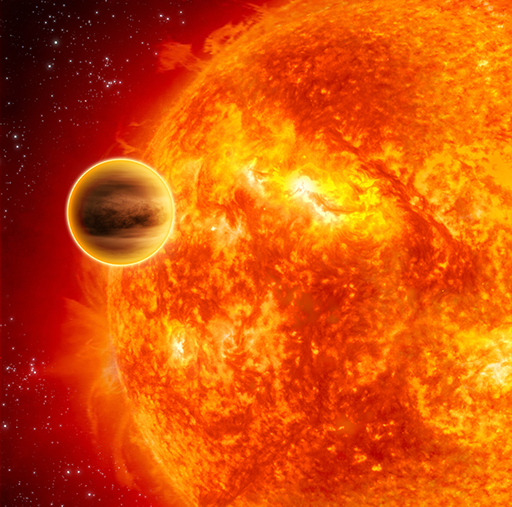2 The first exoplanet: 51 Pegasi b
51 Pegasi b (or 51 Peg b for short) was first discovered in 1995 by astronomers from the Geneva Observatory. For a long time astronomers had expected there to be planets in orbit around other stars, but it was difficult to detect them because planets are very small and faint compared with the stars they orbit around. In our Solar System you can see the planets easily only at night when the Sun is out of sight. The same problem occurs when trying to spot planets around other stars. Separating out the tiny amount of light reflected by the planet is very difficult indeed.
The astronomers at Geneva designed an instrument capable of detecting planets without actually being able to see them at all. By the end of this week you will know exactly how they did that.
It was immediately very clear that 51 Peg b was not going to be like any planet in our own Solar System. 51 Peg b is roughly Jupiter-sized but is much closer to its star than even Mercury is to the Sun, which was completely unexpected. This was the first clue that planetary systems around other stars might be very different from our own.
Because of its size, it is expected that 51 Peg b is a gas giant but, because it is so close to a star, 51 Peg b must be very different from Jupiter. Estimated temperatures for 51 Peg b are around 1000 °C, which is very hot indeed! 51 Peg b was the first example of a new type of planet, named ‘hot Jupiters’. Hot Jupiters are gas giant planets found in orbits very close to their host star. You will learn more about hot Jupiters over the next few weeks.
Figure 1 is an artist’s impression of what 51 Pegasi b might look like. It’s worth noting that really the only thing we can be sure of about this planet is its minimum mass and orbital properties. There is often a lot of artistic imagination in images like these!

